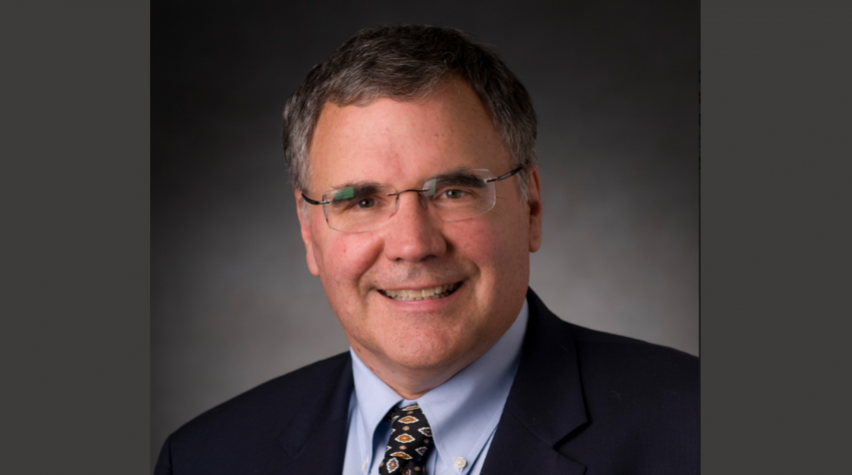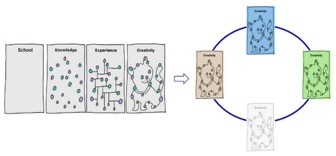
AIChE President-elect Dr. Monty Alger will be presenting in one of the upcoming Management Division Sessions at the Spring Meeting.
He's the keynote speaker in the session “Lessons Learned from the Industrial Practice of the Open Innovation Model for the Development of New Products or Processes.” His talk is titled “Building a Continuous Learning and Innovation Network" and is co-sponsored by the Process Development Division.
Dr. Alger is Professor of Chemical Engineering at Penn State University. Past affiliations include Chief Technology Officer and Vice President of R&D at Air Products, Board Member of AIChE, and General Manager of Technology for GE Advanced Materials.
Vince Magnotta, Session Chairman, had an opportunity to catch up with Dr. Alger and discuss his upcoming keynote presentation.
Management Division: Given your unique perspective of being an industry executive in R&D and now a university professor, how would you define open innovation?
Dr. Monty Alger: Open innovation promotes exploring outside an organization for new opportunities. In today’s world it is hard to be good at everything. Often there are external capabilities, ideas, or technologies that can help with new process, product, or application development. My first experience with open innovation was with a consumer product company years ago when I was working in the silicone industry. Our business's CEO and the consumer product company's CEO agreed to collaborate on new materials development — reduce cycle time, improve margin, and get more innovation to market.
One of the most obvious but biggest realizations was that our “stage-gate” process was an input to their “stage-gate” process. When we thought a new product was ready for sale, in reality it was an option for the customer to consider at the beginning of their development process. That led to a lot of discussion on how we developed new products with customers. We did lean-value stream mapping on our stage gate process and made a number of significant changes. In conclusion, taking the first steps of looking outside your organization can lead to new insights about how to be better connected and responsive to market opportunities.
MD: What are some examples of how industry and academia can think “out-of-the-box” to reduce product development cycle times and also reduce overall costs of development?
Dr. Alger: We live in a globally connected digital world. Many of our practices are linear with long-time constants. The first step is to look at how we think about building new integrated practices for sharing and exchanging knowledge and new concepts. The graphic below captures the change that is underway. The legacy perspective is that you start early life in school and linearly progress through life acquiring experiences and learning to “connect the dots.” Today it is possible to find solutions to about any problem or need by using the internet.
We have moved from local knowledge to a having the nearly instant ability to find what you need. Of course, this requires an individual to have a sufficient base of knowledge to be able to understand what they have found. Several of us at Penn State are working with Burning Glass, a data analytics company, to organize the jobs and skills needed in the market. We are talking to hiring companies to learn their needs and interests so that we can design new learning modules that connect skills with application. Many opportunities exist to think differently about how we do work, how we connect and reduce cycle time and increase the rate of innovation to market. AIChE has a unique opportunity to bring new thinking to the industry through connection to public, private, and government organizations.

MD: What role does/can AIChE play in optimizing open innovation? Are there opportunities for improvement?
Dr. Alger: AIChE can be a forum to highlight and share across organizations and provide training through case studies in sharing practices and approaches. Successes and failures need to be discussed — the latter often provide a lot more insights.
AIChE could consider having webinars or workshops teaching the principles and practices of open innovation (including how to use the practices of licensing, joint development agreements, government-funded R&D, and corporate-funded R&D at universities, institutes and the government. These efforts would be valuable to everyone in the development process of new products — and have the greatest value to young engineers in both industry and academia just entering the innovation process. Another key learning to instill is that the developers of new products or processes think globally to identify open innovation partners.
MD: How can a continuous learning network further the goals of optimal open innovation?
Dr. Alger: We are in the “How do I “ world that YouTube helped create. Have a problem with your garage door, need to change a battery in your remote control? Probably there are several solutions on YouTube. Recently, I needed to find a wire break in our electric dog fence. YouTube showed me how: wrap a wire around a spark plug on a lawn mower engine and attach to one end of the dog fence. Then, tune in a radio to 550 AM and walk in a grid pattern, noting sound changes on the AM radio. It worked.
Imagine an organized, curated knowledge network that combines basic skills and application examples and training. If we can develop application case studies, from market practice, and integrate with demonstration of basic skills, this can be a great resource for education, doing projects, and personal skills development. We can then start generating the needed content. Ask young engineers and scientists, “What do you now know you wish you had known while you were in school?” Ask experienced people, “What have you drawn on a napkin or shared with someone over 50 times?”
The same practices could also be used for proprietary knowledge capture and sharing within organizations. There are lots of possibilities, and AIChE can help convene groups with a broad range of skills and experiences to make this a reality. This is a chance to build on existing initiatives such as AIChE Academy.
MD: Further engaging young engineering professionals is an ongoing goal of AIChE. What role do you see young professionals playing in achieving optimal open innovation?
Dr. Alger: Young professionals have always lived in a global, integrated world. They are much more conversant with technology and how to use systems. Whenever you try to develop a new idea, there is always a group that will ask, “Why would you want to do that?”. There is often another group that will say, “Can you imagine the possibilities if we can make that happen?”. Different perspectives, both important. Need balance. The young professionals can provide fresh thinking around established practices, new ideas for radically new practices. I look forward to discussions on a range of new ideas that we might be able to bring to market through partnership with AIChE.
Final thoughts
Dr. Alger: I look forward to the Spring Meeting discussion and to hearing about other ideas that are underway!
Please plan to attend Dr. Alger’s keynote presentation at the Spring Meeting on April 1 in the Cambridge Room at the Hilton.
Connect with Dr. Alger on Engage.


